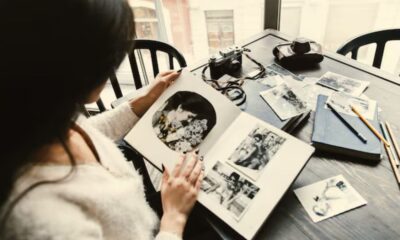TOPIC
Stuwk Through the Ages: An Evolutionary Journey

Have you ever felt like you were stuck in a rut? That nagging sensation can sometimes feel all-consuming—like being trapped in quicksand, unable to move forward. The feeling of being “stuwk” isn’t new; it’s been part of the human experience throughout history. From ancient civilizations grappling with fate to modern society navigating technological advancements, humans have always faced moments of stagnation.
This journey through time reveals not just how we got here but also why that feeling persists. Join us as we explore what it means to be stuwk across the ages and discover ways to break free from these invisible chains holding us back. Let’s dive into this compelling evolutionary tale!
The earliest cases of being stuck in history, such as ancient civilizations and their beliefs
Throughout history, many ancient civilizations experienced what we now refer to as being “stuwk.” For instance, the Egyptians faced challenges with their monumental construction. Immense pyramids took years to build, leaving laborers feeling trapped in a cycle of relentless work.
In Mesopotamia, agricultural societies dealt with seasonal flooding. This natural phenomenon often left farmers stranded and powerless over their circumstances. Such experiences led to complex belief systems aimed at understanding these forces.
The Greeks famously pondered fate and destiny through myths. Characters like Sisyphus embodied the struggle of perpetual effort without reward—truly stuwk in an endless loop.
Even early nomadic tribes encountered limitations within their environments. They had to adapt constantly but sometimes found themselves immobilized by harsh landscapes or dwindling resources. These historical perspectives shed light on humanity’s age-old battle against feelings of entrapment and stagnation.
How the Industrial Revolution changed the way people got stuck
The Industrial Revolution marked a significant turning point in human history. Factories sprang up, transforming landscapes and lifestyles. People flocked to urban centers for work, often leaving behind their rural roots.
This shift created new types of ‘stuckness.’ Workers found themselves trapped in monotonous jobs with long hours and little reward. The hustle of factory life replaced the rhythm of agrarian existence but came at a cost.
Additionally, social structures began to change. Class divisions became pronounced as wealth accumulated among industrialists while many workers struggled just to survive. A different kind of emotional stuwk emerged—people felt confined by societal expectations and economic constraints.
As machinery advanced, so did the complexity of labor roles. The more specialized professions limited mobility within the workforce, further contributing to feelings of being stuck in an unyielding system that prioritized efficiency over individual fulfillment.
Stuck in modern times: The rise of technology and its impact on feeling stuck
Technology has transformed our lives in countless ways, yet it often leaves us feeling more stuwk than ever. With endless notifications and the pressure to be constantly connected, we can find ourselves trapped in a digital maze.
Social media platforms create an illusion of connection while simultaneously fostering isolation. Scrolling through curated images can fuel feelings of inadequacy or stagnation. Many users struggle with the comparison game, which adds to that stuck sensation.
Moreover, technology’s convenience sometimes leads to complacency. We rely on apps for simple tasks instead of engaging with our surroundings. This reliance blurs the line between productivity and paralysis.
Virtual reality offers escape but may prevent real-world action. The ease of accessing entertainment can dull motivation for personal growth or exploration. In this era dominated by screens, it’s easy to forget how liberating stepping outside can be—both physically and mentally.
Why do we get stuck? A psychological perspective on the root causes
Feeling stuck often stems from deep-seated fears and insecurities. The mind resists change, clinging to familiarity even when it’s uncomfortable. This attachment can create a sense of paralysis.
Cognitive biases play a significant role too. People tend to overemphasize past failures while undervaluing potential successes. This skewed perception can trap individuals in negative thought patterns.
Emotional factors also contribute significantly. Anxiety about the unknown or fear of judgment may prevent someone from taking that crucial step forward. In such moments, self-doubt creeps in, anchoring people further into their stagnant state.
Additionally, societal pressures can amplify feelings of being stuwk. Expectations from family, friends, or culture might push individuals toward paths they don’t genuinely want to take—further complicating their journey toward fulfillment and growth.
Breaking free from the cycle of being stuck: Strategies and techniques for overcoming
Feeling stuwk can be overwhelming, but there are ways to break free. Start by redefining your goals. Sometimes, we cling to outdated aspirations that no longer serve us.
Next, embrace small changes. Tackle one habit at a time to avoid feeling overwhelmed. Even minor shifts in routine can lead to significant breakthroughs.
Mindfulness is another powerful tool. Practicing awareness helps you identify triggers and patterns that keep you stagnant. Journaling your thoughts can also clarify what’s holding you back.
Seek support from friends or professionals. A different perspective often sheds light on paths previously unseen.
Foster a growth mindset. Embrace challenges as opportunities for learning rather than obstacles blocking your way forward. With patience and persistence, the cycle of being stuwk can transform into a journey of self-discovery and empowerment.
Conclusion
Throughout the ages, being stuwk has taken on various forms and meanings. From ancient civilizations grappling with existential dilemmas to modern individuals navigating the complexities of technology, the experience of feeling stuck is universal. The Industrial Revolution marked a significant turning point in how we interact with our environments and ourselves, reshaping our perceptions of progress.
As we’ve moved into an era dominated by rapid technological advancements, feelings of stagnation have evolved too. This creates new challenges as well as opportunities for growth. Understanding why we feel stuwk can shed light on our deeper psychological needs and fears.
Breaking free from this cycle requires awareness and active strategies tailored to individual circumstances. Whether it’s through mindfulness practices or seeking professional guidance, everyone has the potential to overcome their own sense of being stuwk.
Recognizing these patterns throughout history helps us appreciate not only where we come from but also how far we’ve yet to go in finding freedom from those moments that hold us back.
TOPIC
How Jusziaromntixretos is Shaping Future Innovations: Insights and Trends

Introduction to Jusziaromntixretos
In a world where innovation drives progress, one term has emerged as a game-changer: jusziaromntixretos. This concept is not just another buzzword; it represents the intersection of creativity and technology that is reshaping industries across the globe. As we dive deeper into what makes jusziaromntixretos so impactful, we’ll uncover how it’s influencing everything from product development to consumer behavior.
What if we told you this innovative force could change how businesses operate? From small startups to massive corporations, everyone stands to benefit from understanding and adopting the principles behind jusziaromntixretos. Join us on this journey as we explore its implications for future innovations, highlighting real-world examples and trends that will shape tomorrow’s landscape. Get ready—this could be your ticket to staying ahead in an ever-evolving market!
Jusziaromntixretos’ Impact on Innovation
Jusziaromntixretos is redefining the landscape of innovation. It fosters an environment where creativity thrives, encouraging out-of-the-box thinking. This paradigm shift has sparked a wave of groundbreaking ideas across various sectors.
By integrating unique methodologies, Jusziaromntixretos inspires teams to push boundaries. Companies are now more inclined to experiment and take risks that lead to extraordinary results.
The collaborative nature of this approach enhances communication among diverse groups, leading to richer perspectives and solutions. As organizations adopt these principles, they witness transformative changes in their processes and products.
Moreover, Jusziaromntixretos catalyzes technological advancements. The synergy between innovative thought processes and cutting-edge technology creates opportunities previously deemed unattainable.
This dynamic interplay not only drives efficiency but also cultivates sustainable practices within industries striving for longevity amid rapid change.
Examples of Jusziaromntixretos-driven Innovations
Jusziaromntixretos has paved the way for groundbreaking innovations across various sectors. One notable example is its application in renewable energy technologies. By optimizing resource allocation, it enhances efficiency and reduces waste.
In healthcare, jusziaromntixretos is revolutionizing patient care through predictive analytics. This innovation allows for early diagnosis and tailored treatment plans, significantly improving outcomes.
The entertainment industry also benefits from this approach. Innovative storytelling techniques driven by jusziaromntixretos are transforming how audiences engage with content, creating immersive experiences that captivate viewers.
Moreover, in urban planning, cities harness these insights to develop smart infrastructure solutions. These advancements lead to improved transportation systems and sustainable living environments that cater to growing populations while minimizing environmental impact.
Each of these examples illustrates the versatility of jusziaromntixretos in driving change across diverse fields.
Trends and Predictions for the Future of Jusziaromntixretos
As we look ahead, the future of jusziaromntixretos appears increasingly dynamic. Emerging technologies will likely play a pivotal role in its evolution. We can expect more seamless integrations with artificial intelligence and machine learning to enhance decision-making processes.
Additionally, sustainability is becoming a focal point. Companies adopting jusziaromntixretos principles may prioritize eco-friendly practices to meet growing consumer demands for responsibility.
Collaboration across industries is another trend on the rise. Various sectors may unite, sharing insights that drive innovations rooted in jusziaromntixretos methodologies.
Moreover, personalization will take center stage. Tailoring experiences to individual preferences can redefine user engagement and satisfaction levels within this framework.
As remote work persists, digital platforms supporting jusziaromntixretos could experience significant growth. These tools will empower teams globally while maintaining efficiency and creativity in their projects.
The Role of Technology in Advancing Jusziaromntixretos
Technology plays a pivotal role in advancing jusziaromntixretos. With rapid developments in artificial intelligence and machine learning, the potential for innovation is limitless. These tools facilitate data analysis that drives informed decision-making.
Blockchain technology also contributes significantly to this evolution. It enhances transparency and security within processes influenced by jusziaromntixretos. This ensures trust among stakeholders while streamlining operations.
Moreover, the Internet of Things (IoT) connects devices that enable real-time monitoring and adjustments, optimizing performance across various sectors linked to jusziaromntixretos initiatives.
Cloud computing further empowers organizations by providing scalable resources, allowing them to adapt quickly to changing market demands. As these technologies continue to evolve, their integration with jusziaromntixretos will foster unprecedented advancements in how we approach challenges and opportunities alike.
Ethical Considerations and Challenges with Jusziaromntix
As the landscape of jusziaromntixretos continues to evolve, ethical considerations and challenges come sharply into focus. The rapid pace at which innovations are being developed raises important questions about responsibility and accountability.
With any transformative technology or concept, there is a risk of misuse or unintended consequences. Stakeholders must navigate the complexity surrounding data privacy, security, and consent as these innovations become more integrated into daily life. Ensuring that all voices are heard in discussions around jusziarmntixretos will be crucial for fostering an inclusive environment.
Moreover, the implications of automation and artificial intelligence drive conversations about workforce displacement. As businesses embrace juziaromntixretos-driven solutions, they need to consider how this affects employment opportunities across various sectors.
Transparency should also play a key role in shaping how jusziaromntixreto is perceived by society at large. Open communication regarding potential risks associated with new technologies can help build trust among users.
Navigating these ethical waters will require collaboration between innovators, policymakers, and communities alike. Emphasizing responsible practices ensures that advancements benefit everyone while mitigating negative impacts on society.
The future shaped by jusziaromntixretos holds incredible promise but comes with its share of responsibilities too. Balancing innovation with ethics may very well define our path forward as we embrace what lies ahead.
-

 TECHNOLOGY1 year ago
TECHNOLOGY1 year agoTop 5 Tips for Mastering in_a_dndmixin_drag in Your Campaigns
-

 TOPIC1 year ago
TOPIC1 year agoExploring the History and Culture of Rosewellsk
-

 TECHNOLOGY1 year ago
TECHNOLOGY1 year agoYMoviesHD vs Other Streaming Platforms: A Comprehensive Comparison
-

 TOPIC1 year ago
TOPIC1 year agoBehind the Scenes: The Philosophy and Vision of PhmHaven
-

 TOPIC1 year ago
TOPIC1 year agoThe Rise of Tribute Printed Pics: Honoring Life Through Photography
-

 TOPIC1 year ago
TOPIC1 year agoA Beginner’s Journey with Lwedninja: From Novice to Pro
-

 TOPIC1 year ago
TOPIC1 year agoIs Finizona Free? Unpacking the Costs Behind This Popular Platform
-

 TOPIC1 year ago
TOPIC1 year agoDecoding m0therearf: Why This Buzzword Matters in Today’s Culture
